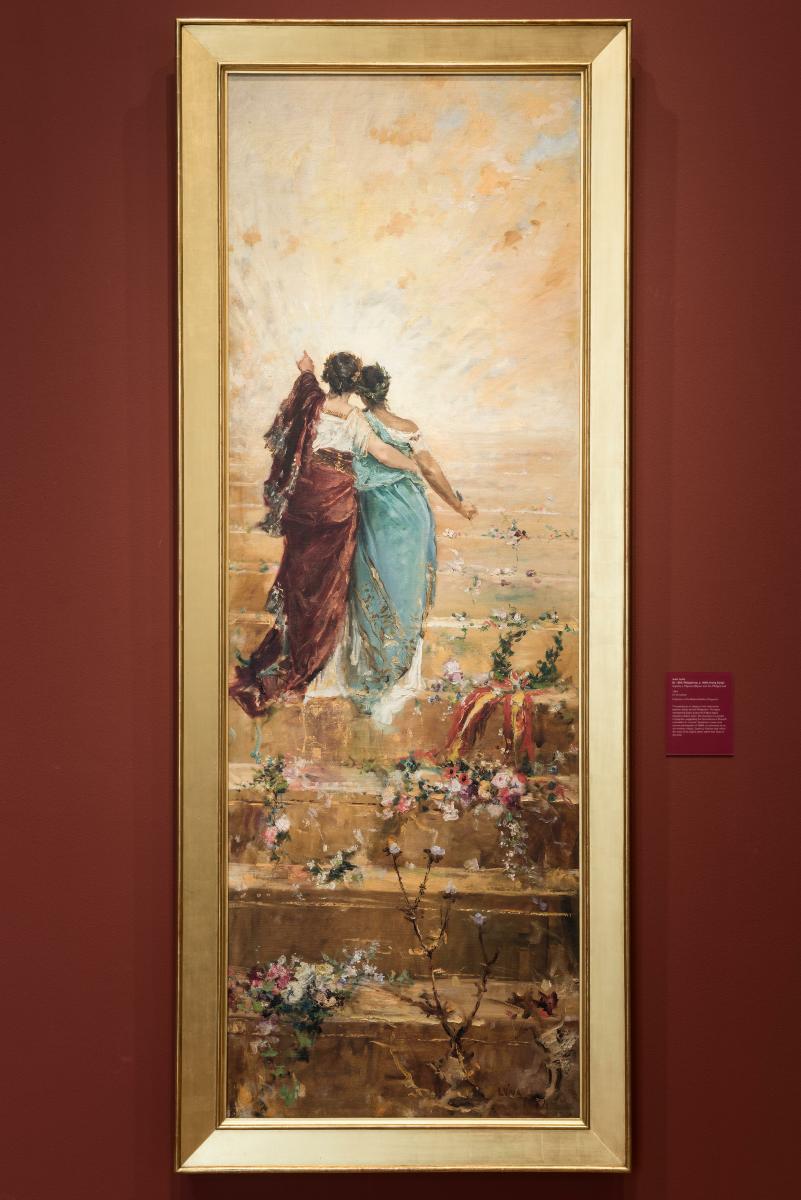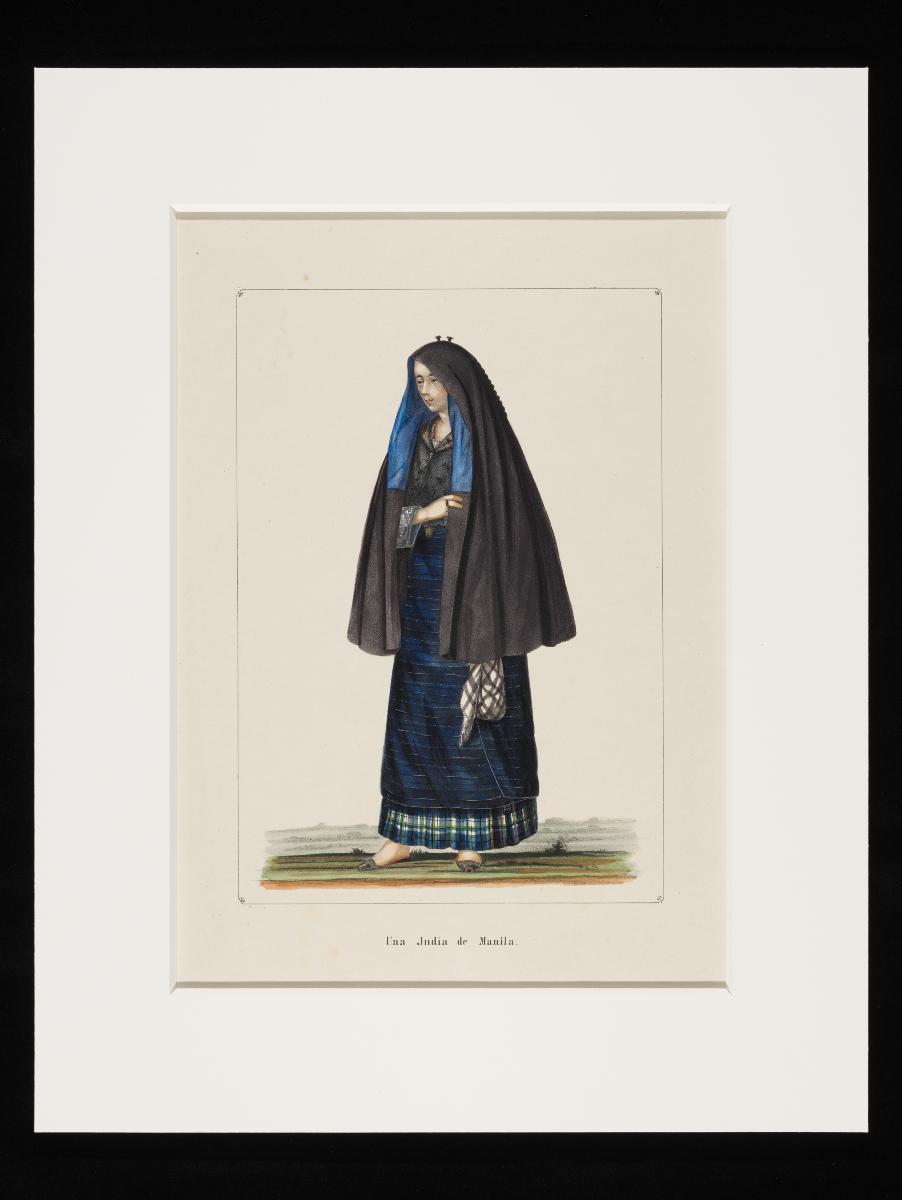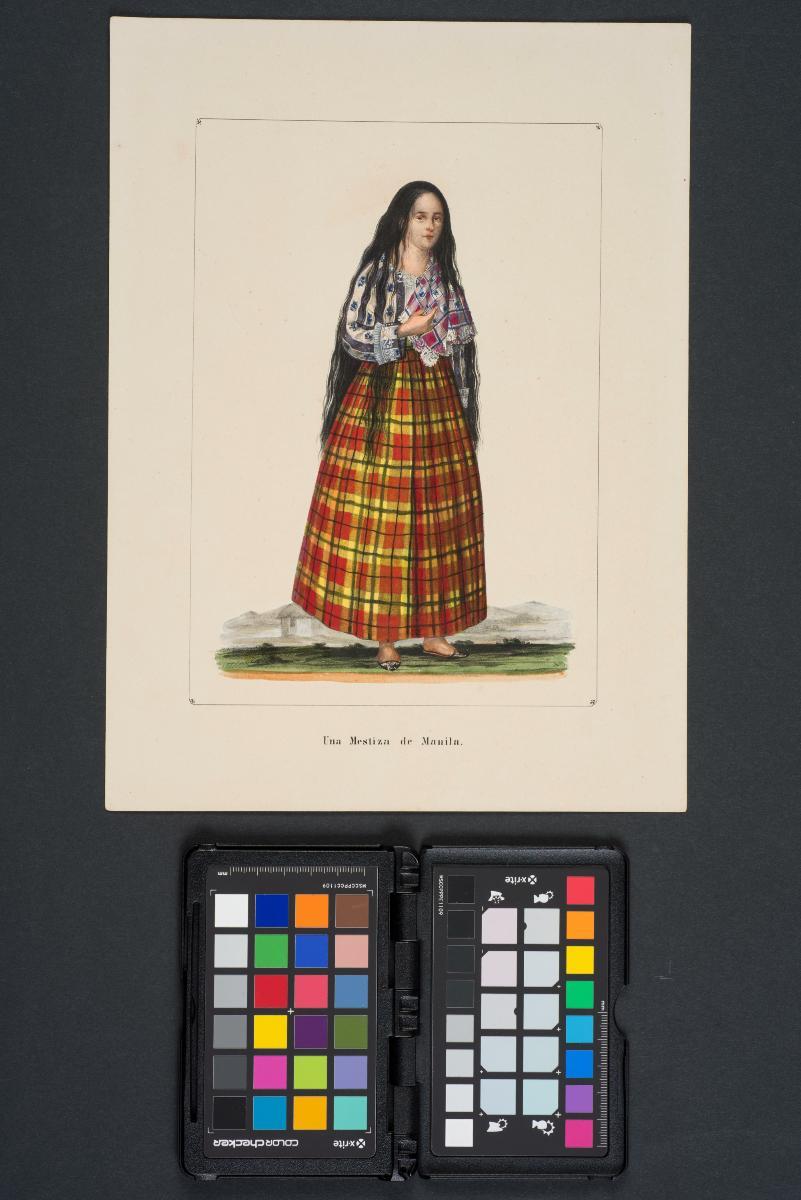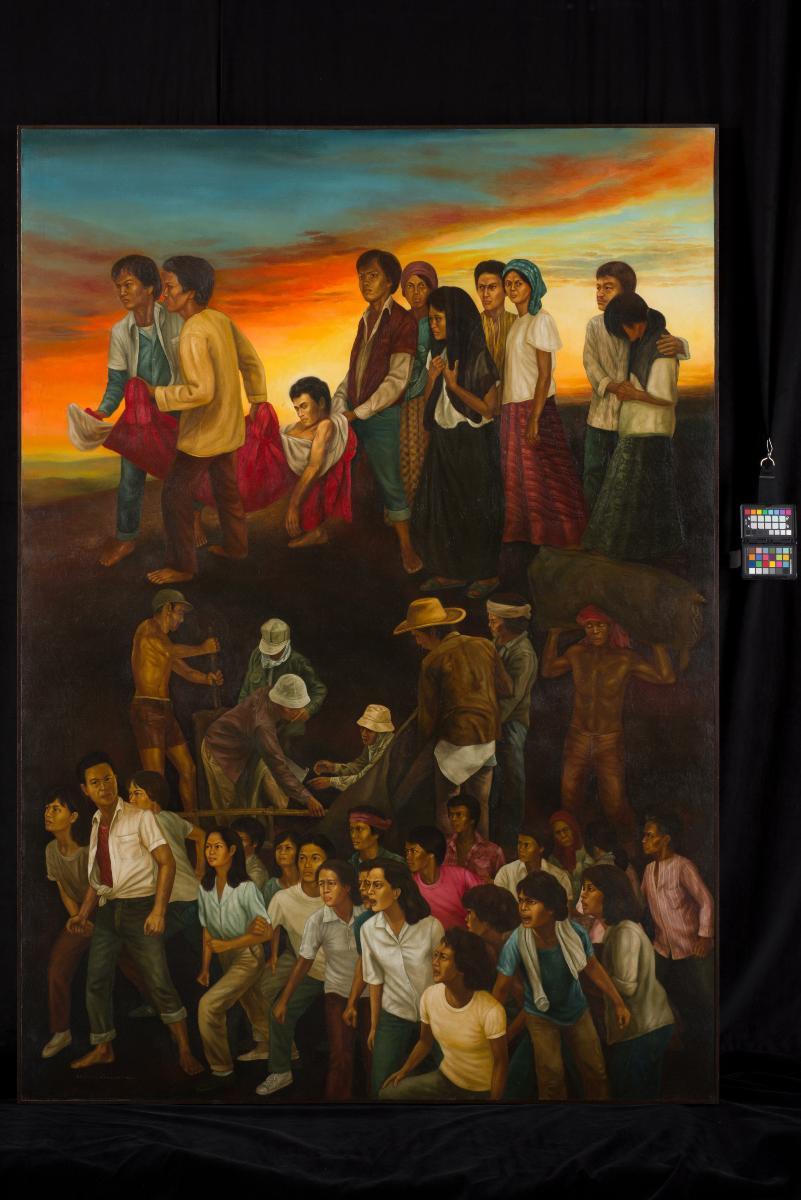Espana y Filipinas is an allegorical painting, using two female figures to represent the colonial relationship between Spain and the Philippines. Juan Luna was an accomplished academic painter, and this painting shows his mastery of nineteenth century visual conventions. The work was painted at the height of Luna's career, following his public acclaim for the monumental canvas the Spoliarium. This version of the painting was made for Luna's friend, the nationalist intellectual Pedro Paterno. While Spain is clearly the dominant figure, shown as guiding the Philippines and pointing to the way forward, the two figures are nonetheless relatively similar in stature and dignity, suggesting that the composition is intended to represent a benevolent and idealised image of the colonial project. The work therefore represents the reformist aspirations of certain nineteenth century Filipino intellectuals towards a more equitable and less exploitative colonial relationship with Spain. A later allegory by Luna on the same subject - inspired by the Paterno version - was commissioned by the Spanish Ministry of Overseas Affairs and shown at the 1888 Universal Exposition in Barcelona, indicating that the artwork also played an active public role in colonial propaganda.















